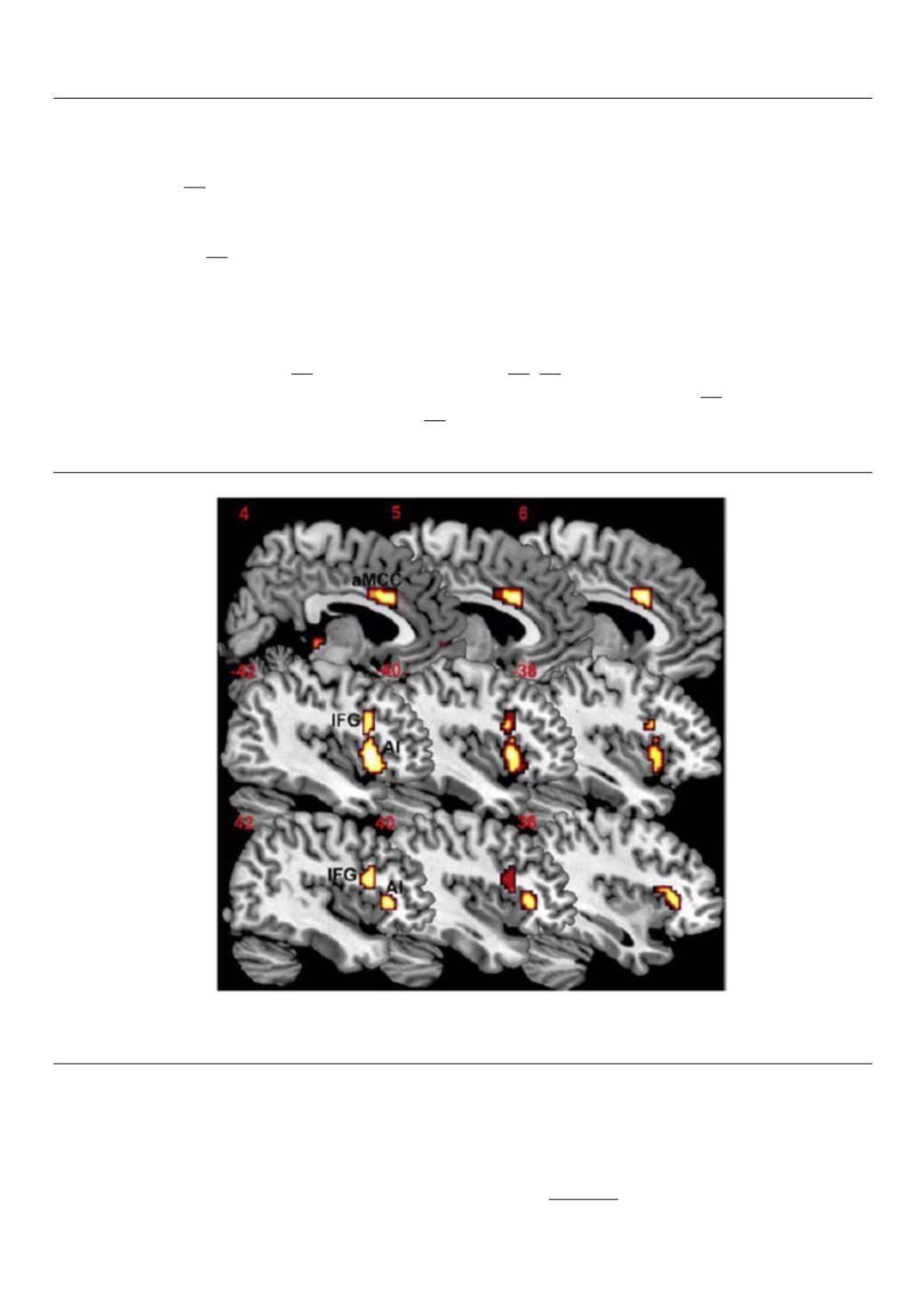
backs of their hands. Abstract cues like arrows indicate the intensity of the stimulation and to whom it will be delivered
next. Adapted from Bernhardt & Singer, 2012.
When comparing the neural activation elicited during the first-hand experience of pain with the
brain activation elicited when merely observing the other person experiencing painful stimulation,
the researchers
found that both conditions led to overlapping activations in the anterior insula
(AI) and the anterior medial cingulate cortex (aMCC). These two brain regions comprise the so-
called affective dimension of a pain experience and have been associated with subjective reports
of unpleasantness
In line with the “shared network hypothesis of empathy”, these data suggest
that we share emotions with others by activating the neuronal representation underlying our own
experience of these emotions. Nearly a decade of empathy research performed in different
laboratories across the world has now revealed that activations in AI and aMCC have been
consistently observed in numerous empathy-for-pain studies, irrespective of whether the other
person in pain is a loved one
or an unfamiliar person
These findings even hold true when
someone merely views a video or picture depicting people in painful situations
Figure 2 depicts
the summary results of such a meta-analysis
showing activation in AI and aMCC elicited by
empathizing with the pain of others.
Figure 2.
Activation when “observing others in pain > observing others in no pain” across nine independent studies.
aMCC, anterior medial cingulate cortex; IFG, inferior frontal gyrus; AI, anterior insula (Lamm et al., 2011).
With this background, Tania Singer moved to the University of Zurich, where she started to
investigate the plasticity of social emotions by testing whether empathy could be cultivated through
training. In this context, she was interested in finding out how empathy was encoded in the brain of
an expert meditator who had cultivated such prosocial emotions over many years. Luckily, she had
met Matthieu Ricard, a long-term Buddhist practitioner (see
) in London. Matthieu Ricard
had already been involved in many neuroscientific research projects in the context of his
association with the Mind and Life Institute and was thus open to this sort of research. Matthieu
274


